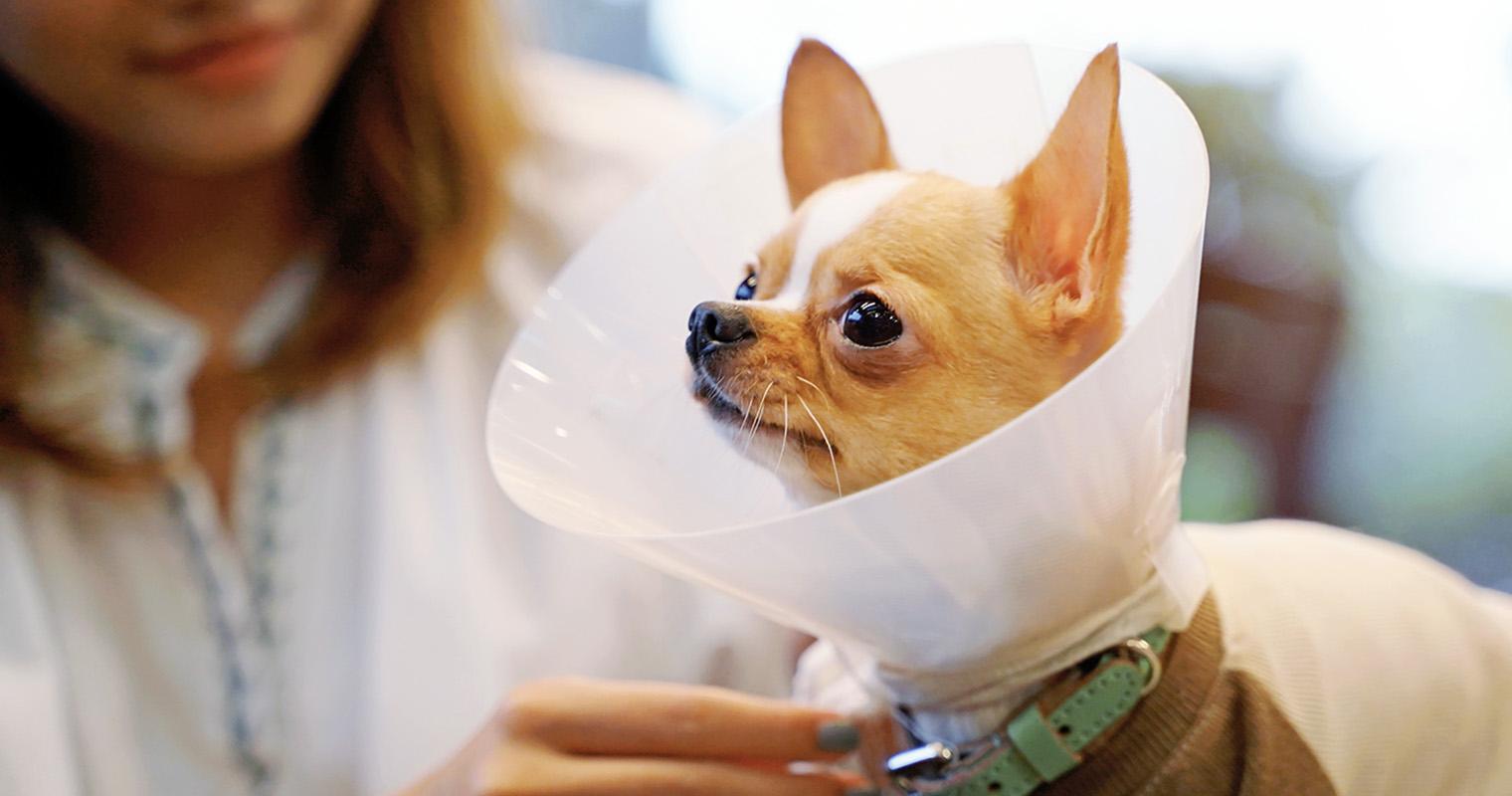Why You Should Neuter or Spay Your Dog
From avoiding behavior issues to preventing unwanted pups, there are several reasons why it makes a whole lot of sense.
From avoiding behavior issues to preventing unwanted pups, there are several reasons why it makes a whole lot of sense.
by Janelle Leeson, | March 11, 2024

Nuchylee / Shutterstock
Bringing home a new puppy is so exciting, but it also comes with big responsibilities. One of the most important things you can do is decide to spay or neuter your pet. These are common procedures that veterinarians and animal welfare professionals highly recommend — because it’s good for both you and your pet.
It’s only natural to have many questions, so we reached out to Dr. Valentina Henao, Medical Director at the Veterinary Emergency Group (VEG) in Miami, Florida. She detailed the ins and outs of both procedures, what happens during spaying and neutering, the behavioral changes you might expect, and how to help your pup recover. She also shared why spaying or neutering is really beneficial for your pup’s lifelong health and well-being.
Both spaying and neutering are sterilization procedures for dogs and cats, meaning a licensed veterinarian will remove your pet’s reproductive organs under anesthesia. It prevents unwanted litters that lead to overpopulation and reduces the likelihood of medical and behavioral issues in dogs. Male pets are neutered, while female pets are spayed.
Neutering refers to the removal of a male’s testicles to render the dog infertile. “Neutering is a simple and fast procedure,” Dr. Henao says. That’s because the testes are in the scrotal sac outside of the abdomen. A quick five to 20-minute prep, snip, and stitch (or medical glue) is all that’s needed for the minimally invasive procedure. You can expect your puppy to come home the same day.
Spaying is the removal of a female dog’s reproductive organs, so that they cannot get pregnant. Dr. Henao explains that spaying a dog takes a little longer than neutering, because it involves surgically removing the ovaries and uterus (also known as an ovariohysterectomy) or the ovaries only (aka an ovariectomy). Spaying usually takes around 30 minutes, but it can last up to an hour for dogs in heat. Although recovery may be longer for female dogs than male dogs, most will come home the same day they’re spayed.
By neutering pups when they’re young, you’re reducing their risk for health conditions, such as testicular cancer and benign prostatic hyperplasia (an enlarged prostate that causes discomfort and problems urinating). “Intact males can also have behavioral issues,” Dr. Henao says, “like aggression, escaping, and marking with urine.”
Dr. Henao says you can expect to see the following behavioral changes in neutered dogs:
Decreased aggression: Neutering can significantly reduce dog-to-dog and territorial aggression.
Reduced roaming: Without hormones telling him to find a mate, there’s a decreased risk of your pup wandering from home.
Eliminated marking: Territory marking, Dr. Henao says, “is almost completely eliminated if neutered before the behavior starts happening.”
Decreased mounting and humping: A relief to all, this awkward behavior is significantly reduced after neutering.
Getting your dog spayed is the best way to prevent uterine infections, reduce the risk of uterine and mammary (breast) cancers, and minimize the likelihood of unwanted behaviors that come with heat cycles. Dr. Henao points out that Pyometra, for instance, is a potentially fatal uterine infection that is entirely avoidable with a spay.
Dr. Henao says you can expect to see the following behavioral changes in spayed dogs:
Decreased aggression: Spaying can lead to a decrease in aggression towards other dogs and people.
Less territorial: Pups often become less territorial after spaying.
Improved trainability: “Spayed dogs are easier to train and are more focused on their family,” Dr. Henao says.
Eliminated heat cycles: No more messy heat cycles or its unwanted behaviors such as roaming, increased vocalization, or inappropriate urination.
“Sex hormones are important for development,” Dr. Henao says. “Some larger dog breeds can take up to two to three years before they reach full maturity, whereas some smaller dog breeds may reach maturity by six to nine months.” She says the larger your dog’s breed, the longer your veterinarian may recommend waiting before having the procedure.
The American Animal Hospital Association (AAHA) and the American Veterinary Medical Association (AVMA) both offer recommendations regarding the age to spay and neuter puppies. These recommendations help guide pet parents and veterinarians in making informed decisions about safely spaying or neutering pets and are routinely updated with new findings.
The AAHA recommends neutering large-breed male dogs (or pups more than 45 pounds) after they’re done growing. This may be around nine to 15 months of age. Because small dogs mature quicker than large breeds, they can be neutered at roughly six months old.
Female dogs who have gone into heat, or are in heat, can be spayed. But it’s best to spay your dog before that happens. “The chances of developing mammary cancer significantly increase with each heat cycle,” Dr. Henao says.
The AAHA recommends spaying small dogs (less than 45 pounds, full grown) at around five to six months old and large-breed dogs between five and 15 months. Dr. Henao suggests making these decisions about your dog’s reproductive health after consulting your veterinarian.
Pups will need lots of rest and no rambunctious activity after their spay or neuter procedure. You’ll need to restrict how much they run, jump, and go up the stairs for about 10 days (for neutering) to up to two weeks (for spaying). Short walks on a leash are okay, but skip doggie swimming or bathing until your vet gives you the okay.
“Some pet parents may notice their dog returning to normal after only a few days,” Dr. Henao says. “Many dogs will require pain medications and rest.” Along with post-operative pain medications, your veterinarian will likely send you home with, or recommend, an Elizabethan collar (aka the e-collar or “the cone of shame”) to prevent your dog from licking or chewing their wound.
Now that we have the when and why down, it’s time to consider where to get your dog spayed or neutered. The good news is there are lots of options at different price points.
You can opt to spay or neuter your dog at your veterinarian’s office. They may be familiar with your pet, but are often more expensive. The shelter you adopted your puppy from may offer the procedures, or look for a low-cost spay-and-neuter clinic near you. One example is the American Society for the Prevention of Cruelty to Animals (ASPCA), which offers low-cost spay and neuters in New York, Los Angeles, and North Carolina.
Most importantly, Dr. Henao says, the medical staff should complete a preoperative physical exam and bloodwork to ensure your dog is healthy enough for the procedure.
Animal rescues often spay or neuter their dogs before you adopt them. But if they haven’t, the cost can vary by location and the type of facility you visit.
Low-cost clinics or shelters: $50 to $100
Private veterinary practices: $250 to $600 (spaying) and $200 to $500 (neutering)
If you have pet insurance, they’ll likely cover this cost. But if you don’t, there are low-cost organizations that can help. Start by visiting Pet Help Finder to locate one.
During your dog’s first vet visit, the doctor will do a complete physical examination. This includes checking their weight as well as asking you questions about your pet’s diet, eating habits, bathroom routines, and if they’re on parasite preventives. This is also when, if your new pet is not yet spayed or neutered, you can schedule this procedure, based on your dog’s age and health.
The companionship of a dog may seem priceless, but the reality is that dogs are a significant financial commitment. Your first year of being a pet parent can cost up to $3,270. If you’re on a tighter budget and could use more help with some of these expenses, including spaying or neutering your pup, head to Pet Help Finder for suggestions.
Weight gain is an issue for any pet, whether they are spayed or neutered or not. Weight can increase due to hormonal changes. To prevent weight gain after spaying or neutering your dog, consult your veterinarian about adjusting your dog’s diet and exercise routine.
Spaying and neutering is the most commonly performed surgical procedure in dogs (and cats) across the U.S. But like any procedure that requires anesthesia, it comes with the risk of complications. Veterinarians minimize those risks with careful pre-operative assessments like bloodwork, physical examinations, and safe anesthetic protocols based on your pet’s age and health. To minimize the risk of infection or pain after the procedure, they’ll send you and your puppy home with care instructions and medications to keep them comfortable. The overall benefits of spaying or neutering almost always outweigh the risks.
An Update on the Risks and Benefits of Neutering in Dogs
Current Perspectives on the Optimal Age to Spay/Castrate Dogs and Cats

Janelle Leeson is a Portland, Oregon-based freelance writer. Her work has been featured in magazines such as Inside Your Dog’s Mind, Inside Your Cat’s Mind, and Paw Print, as well online at Insider Reviews, NBC Select, Shop Today, PetMD, and Daily Paws. She has two adventure cats, a flock of urban chickens, and a soon-to-be-husband who doesn’t mind housing the occasional foster cat — or five.